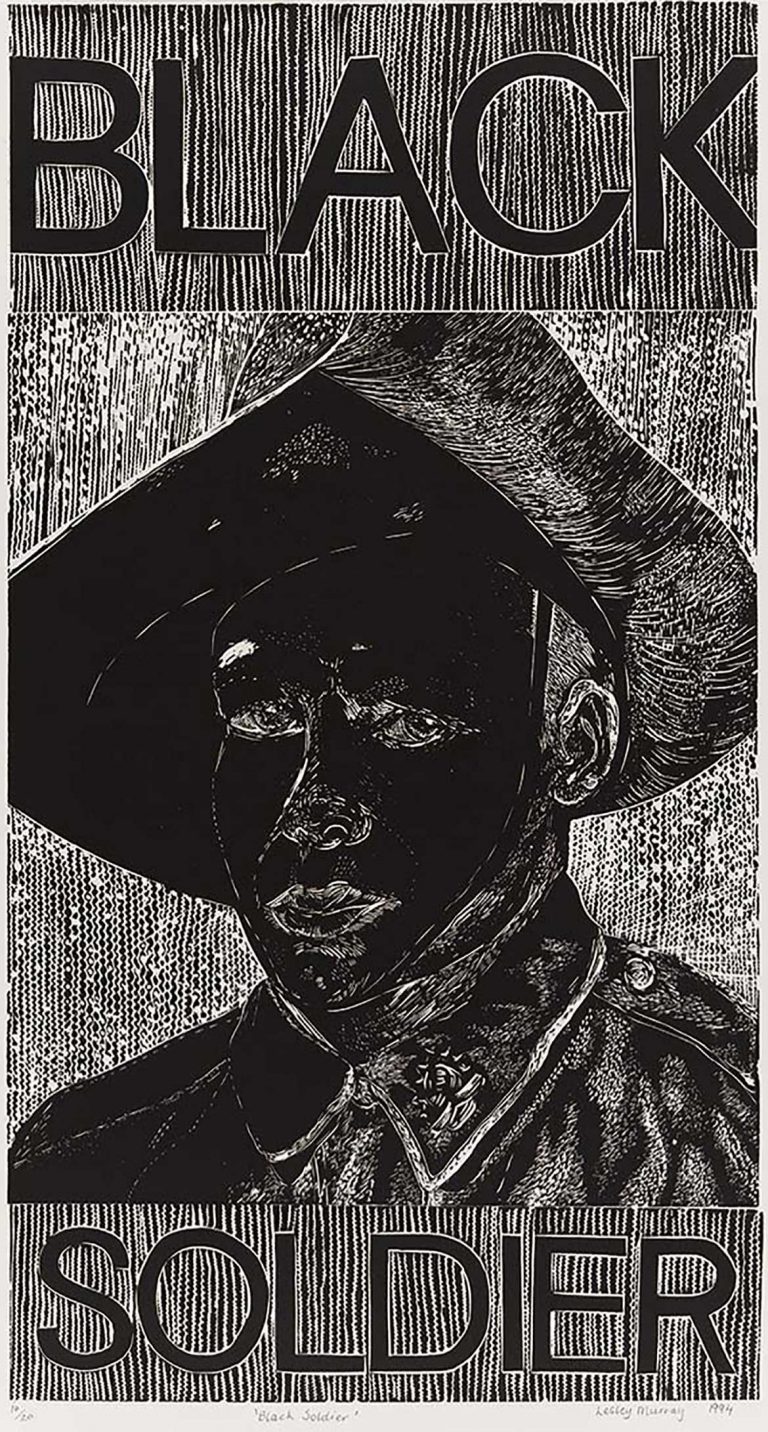We acknowledge the Traditional Owners of the land on which the Queensland Art Gallery | Gallery of Modern Art stands and recognise the creative contribution First Australians make to the art and culture of this country.

Lesley Anne Murray / Australia b.1968 / Black soldier (From ‘My grandfather’ series) 1994 / Linocut on BFK Rives paper, ed.10/20 / Purchased 2003. Queensland Art Gallery Foundation / Collection: Queensland Art Gallery | Gallery of Modern Art / © Lesley Anne Murray 1994. Licensed by Viscopy, Sydney, 2013
Lesley Anne MurrayBlack soldier (from ‘My grandfather’ series) 1994
Not Currently on Display
Lesley Anne Murray’s prints give insight into the experiences of the many Aboriginal and Islander men who wore multiple hats, working extraordinarily hard to support their families while building strong communities. Exploring her grandfather’s life, Murray’s 1994 suite references the anonymity of Aboriginal and Torres Strait Islander people right up until the late 1960s through the repeated use of the appellation ‘Black’.
Black boy recalls the practice of removing Aboriginal youths from their families to work in the pastoral industry; Black soldier shares the pain of the Aboriginal and Torres Strait Islander people who fought for Australia in various military campaigns, only to have their service effectively ignored until recently; Black boxer represents Aboriginal men who worked in touring boxing circuses, which were often stages for racial tensions; while Billy Murray presents a proud Aboriginal man and patriarch.
Lesley Anne Murray was born in 1968 in Armidale, in northern New South Wales, and now lives in Perth. She was raised by her mother Pamela Meehan (née Murray) and stepfather Allen Meehan for most of her early childhood. From the age of ten, Murray, the eldest of five children, was under the care of her grandparents, Billy and Valerie Murray, in the small town of Uralla, not far from Armidale.
While in her second year of study at the University of Tasmania, Murray produced the series ‘My grandfather’, comprising three linocuts and one woodcut. The series spans the life of the artist’s grandfather, Billy Murray, who is depicted in Black boy, Black soldier, Black boxer and Billy Murray. The title lettering branded across the top and bottom of the images powerfully references the anonymity experienced by Indigenous Australian people up until the late 1960s. It was not until the referendum of 1967 that Indigenous Australian people were first recognised by a wider public as Australian citizens.
Discussion Questions
1. It is a truly sad reality to reflect on the fact that many Australians who grew up proudly commemorating the Australian Defence Force and returned soldiers at Anzac parades have only recently been learning about the contributions and sacrifices made by Indigenous Anzacs. Who is responsible for overlooking the service of Aboriginal and Torres Strait Islander service men and women?
2. For many who served, the recognition of family, friends, comrades, local communities and the nation was crucial to their health and well-being upon return from battle grounds wounded physically, spiritually and mentally. Discuss the lasting impact that Indigenous Anzacs and their families would have had to deal with in the seeing their sacrifices being overlooked at a time of great need.
Activities
Watch, read and learn about the stories and lives of Aboriginal and Torres Strait Islanders Anzacs who fought in the First World War through the State Library of Queensland’s ANZAC 100 resource.